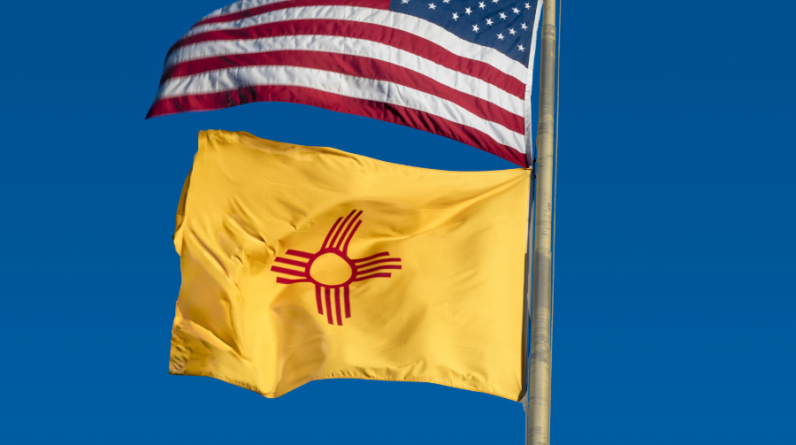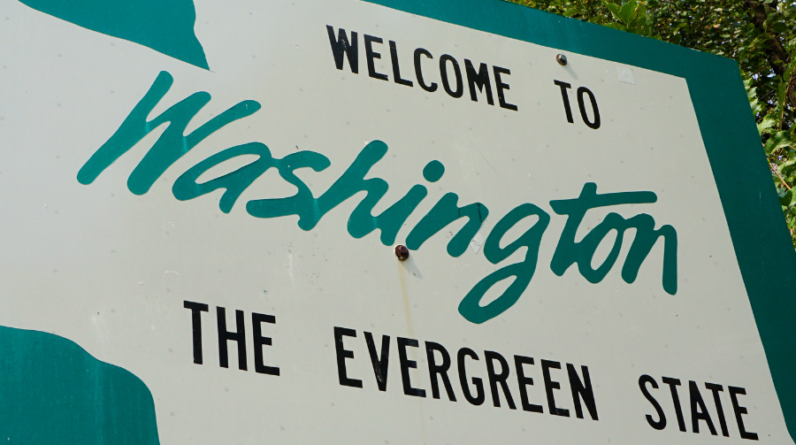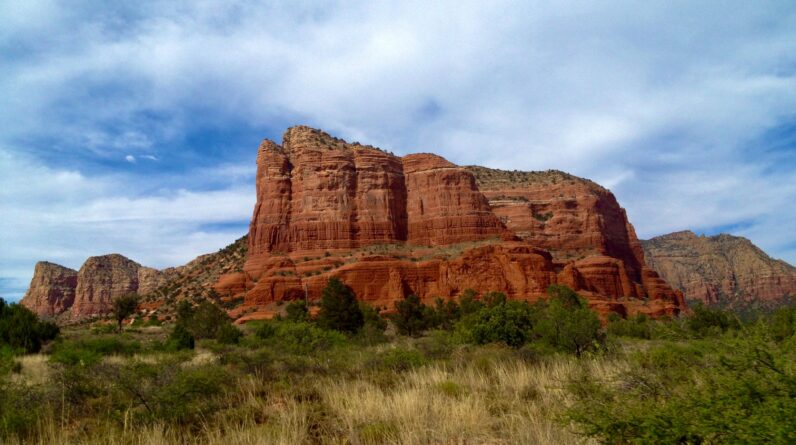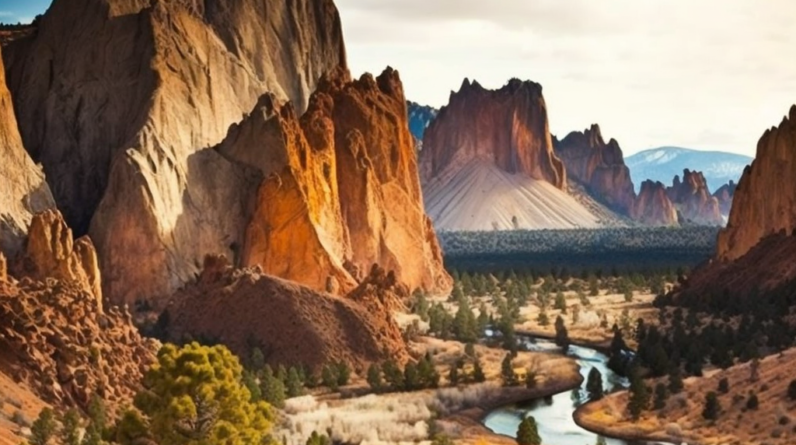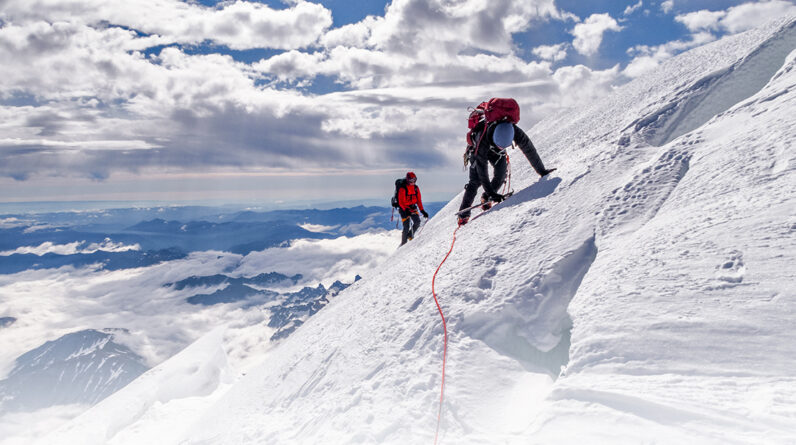
Is Climbing Mount Rainier Hard?
Getting a permit to climb Mount Rainier can be a difficult process. You need to find out everything you can about the permit and how it works before you can plan your climb. This is especially important if you have never done any climbing before.
Can you climb Mt. Rainier in a day?
Located in the state of Washington, Mount Rainier is one of the tallest mountains in the contiguous United States. Its peak stands 14,411 feet above sea level.
To climb Rainier, you’ll need to have the proper equipment and physical fitness. It’s a tough climb with steep glacier travel and deep crevasses. It’s also very windy at high altitude.
There are several ways to get to the top of Rainier. The most common route is the Disappointment Cleaver. This route has ladders and fixed protection. However, most climbers make the trek up two routes.
Rainier’s other route, the Liberty Ridge, is a more technical route. It’s not as popular, but it’s considered one of the most rewarding. This route involves roped travel and elevation gain of over 9,000 feet.
Climbing Mount Rainier requires specialized training and an expert in glacier travel ropes. You’ll need to pack warm clothing, lots of water, a warm hat and gloves, a headlamp, a pack and a basic first aid kit.
If you want to climb Rainier, you’ll need to obtain an individual permit. You can get one online for $50. You’ll also need a camping permit.
Mount Rainier is a popular destination during the summer. However, you can visit during the winter, too. In fact, Mount Rainier offers snowshoeing trails and ski descents.
A trip to Mount Rainier is a great way to spend a day. However, you should prepare ahead of time. It’s a long drive to get there, so you’ll need to take your time. You also may want to bring your own food and drink.
The summit of Rainier is a wide crater surrounded by icy glacier caves. It also has a summit register that keeps track of who has been up there.
Cost of climbing Mt. Rainier
Whether you’re an experienced climber or you’re trying your hand at Mount Rainier for the first time, you’ll want to have a plan in place before you begin. There are several things you’ll need to prepare for, including waterproof hiking boots, a climbing harness, and a backpack with an insulated sleeping bag. You’ll also need a lighter headlamp, dark-lens sunglasses, and a pair of snow goggles.
There are several routes to Mount Rainier, and each requires a different set of equipment. For example, the Disappointment Cleaver route takes you through Camp Muir at 10,000 feet. However, this route has a steep descent and the risk of avalanches increases as the glacier softens.
Another option is the Liberty Ridge route. This route is a challenging option for experienced climbers, but it also requires a high level of fitness. The route is often climbed early in the climbing season because it offers the most technical route to the summit.
If you plan to climb Mount Rainier, you’ll need a climbing permit. You can obtain one from the park information office. The fee for climbing the mountain is $52 for anyone 26 and older, and $35 for anyone younger than 25. This fee covers one vehicle for the whole year. The fee is subject to change each year, depending on the Consumer Price Index. The fee also includes an afternoon orientation.
Unless you’re an experienced climber, you should consult a professional tour company to make sure you’re prepared. They will provide you with the necessary training and equipment. They’ll also give you tips on pacing, hydration, and weather.
It’s also important to note that the amount of altitude sickness you suffer is not dependent on your age or fitness level. However, the risk of avalanches increases during the winter.
Conditions on Mt. Rainier in 2021
Despite its glacier-shrouded appearance, Mount Rainier is a treacherous mountain. While climbing Rainier is a safe and popular activity, it is essential that climbers take the proper precautions and have the correct gear and training.
Rainier is the fifth tallest peak in the contiguous United States. It is also the largest volcano in the Cascade Range, reaching an elevation of 14,411 feet. The mountain’s glaciers have dropped 45% in thickness since 1900.
The recent summer heat dome has caused record breaking temperatures on Rainier. This has also caused the snow to melt quickly. The freezing level has been above the summit elevation for almost a week.
Although the freezing level has not dropped at night, it is likely that the level will remain above the summit for the foreseeable future. However, the warmer weather has caused a rapid decrease in the snowpack in the Cascade Range.
The Emmons/Winthrop Glacier Route has also been affected by the record breaking heat. As a result, most of the guide services have ceased Rainier operations.
Several viable options exist for a new route to the top of Rainier. A few of these include the Disappointment Cleaver route.
The Mount Rainier Lahar Detection System is a suite of monitors that detect massive volcanic mudflows. This type of debris flow has occurred 32 times since 1967 in the Tahoma Creek drainage.
As a result, all vehicles traveling in the Mount Rainier National Park during the winter season are required to carry tire chains.
Climbers who are planning to climb Mount Rainier should check the National Weather Service’s website for the latest weather information. The site also has live webcams to track conditions on the mountain.
Topographic prominence of Mt. Rainier
Using a vertical distance between a mountain summit and its key col, the topographic prominence of Mount Rainier is measured. This is considered to be the final, definitive figure for a mountain’s height.
The United States Geological Survey has measured Mount Rainier since 1913. The height was once in doubt, but new measurements have placed the main summit at 14,408 feet.
The height of Mount Rainier varies naturally with the seasons. The height of the mountain ranges from about 14,410 feet to more than 14,800 feet. In the summer, the mountain is covered with snow and ice. The lower slopes are home to lush, old growth forests. The upper slopes are much steeper and rocky.
Aside from its height, Mount Rainier also has a very high volume of glacial ice. It is home to 26 major glaciers, including the Carbon Glacier. The Carbon Glacier is the largest glacier by volume in the lower 48 states.
In addition to its glaciers, Mount Rainier is home to ice streams that cascade from the mountain’s summit in all directions. These ice streams are sensitive to climate change. The climatic conditions that determine the flow of ice streams usually take several years to be noticed.
Mount Rainier is also home to many mammals, including bears, black bears, deer, and mountain goats. The mountain also features a variety of birds. The mountain is surrounded by thunderous waterfalls and lush old growth forests.
As part of Mount Rainier National Park, the mountain attracts over two million visitors each year. The park is home to several glaciers and is a center for exploration and climbing. The park has a rich cultural history.
It is important to recognize the park’s natural environment, as well as its history. The park is home to many mammals and birds.
Mountaineering on Mt. Rainier
Almost every year, climbers lose their lives on Mount Rainier. Most of these deaths are caused by poor training, poor decisions, or inexperience. A few are caused by rockfall and avalanche.
While the weather on Mount Rainier varies from year to year, most of the climbing season is from late May through mid September. In summer, storms tend to come from the north and in winter, storms usually come from the south.
Mount Rainier is an active volcano that generates its own weather. Depending on the time of year, mountaineers should expect to experience fierce winds, intense sun, cold temperatures, and snow. Wear a hat and sunglasses while climbing. Wear thick layers to avoid hypothermia.
Mountaineers on Rainier need to be prepared for any weather. They should pack warm clothing, a hat, sunglasses, and a headlamp. They should also bring a basic first aid kit.
There are 20 climbing routes on Mount Rainier. The most popular route is the Disappointment Cleaver. This route usually has a direct line to the summit. However, it does have a few crevasses. There are also several snow fields and glaciers.
Climbers on Rainier should be prepared to carry at least 40 pounds of gear on their backs. They should also be prepared to hike for many hours. This is one of the most demanding climbs in the west.
Mountaineering on Rainier is challenging, but it is also rewarding. The mountain offers technical challenges, technical descents, and ski descents. It is a great training ground for bigger mountains.
Mountaineers should plan their itinerary carefully, especially if they are taking part in a summer expedition. Inclement weather can disrupt a program, making it uncomfortable.
Can a Novice Climb Mount Rainier?

There are many great benefits to climbing Mount Rainier. However, you shouldn’t attempt this challenge if your body isn’t ready for it. While there are many ways to prepare for a Rainier climb, there are also some precautions that must be taken to ensure a safe and successful experience.
It is crucial to choose the best time to start your climb before you embark on an expedition. The best time to climb Mount Rainier is in the early summer months of May through August. This is the warmest time of the year and the risk of inclement weather is lower. On the other hand, in the winter months, there is a higher risk of rock falls and avalanches.
There are two main routes to the summit. Disappointment Clleaver is the most well-known route. The ladders on this route cross large crevasses in the mountain. The other route, the Emmons Glacier, is more difficult. Both of these routes require glacier travel, crevasse rescue, and knowledge of self-arrest.
Rainier climbing requires many skills including first aid and navigation skills. A team must include experienced climbers with knowledge of crevasse rescue techniques and the necessary gear. Climbers should also be ready to turn around in bad weather.
Rainier can have unpredictable weather and deep crevasses that can present a danger to climbers. You should choose a guide who has experience climbing the mountain. If you are looking for more guidance, there are guided trips and courses.
Depending on the route you choose, your climb will require you to hike for at least three days. The summit is at 14,411 feet. In order to reach the top, you will need to climb over 2,700 feet, with the majority of your elevation gain on the lower slopes. This makes it a particularly challenging climb. It is composed of both class 3 and 4 terrain. A strong mind and physical strength are essential. Weather delays, lack of sleep and other factors will all be important. Also, you need to be prepared for team dynamics, such as fatigue, communication, teamwork and teamwork.
Rainier summit attempts require a lot of planning, preparation, and training. There are many routes you can climb that are accessible to beginners. Paradise is the most popular route. It follows the Skyline Trail and eventually leads to Camp Muir. You will also need to learn how to use an ice axe, a helmet, and crampons. You will also need to know how to use a headlamp, as the mountain has a large number of crevasses.
Rainier, the fifth-highest mountain in America is also the highest. It is one of the Cascade mountains with the most glaciated peaks. The glaciers make the upper slopes much steeper than the lower slopes. The mountain is home to the largest glacier cave in the world. There are also 26 glaciers on the mountain.
Is Mount Rainier Difficult to Climb?

Despite the fact that Mount Rainier is one of the most popular climbing destinations in the United States, it is not the easiest mountain to climb. It is essential to be prepared for the climb. You need to be able to safely climb the mountain and know what you can expect on your climb.
The best time to climb Mount Rainier is during the summer. The mountain is very prone to storms, which can be dangerous, so you should check the weather forecasts prior to your climb. You should not climb if the weather forecast is bad.
In the winter, you need to prepare for avalanches. You should have avalanche training and an avalanche forecast. These are essential and you should wait for the weather to improve before purchasing them. You should also be prepared for a large backpack. You should also wear warm clothing.
Rainier, a mountain with a high degree of glaciation, can have crevasses up to ten feet deep. Ingraham Glacier is the most fatality area. An ice avalanche that struck the glacier in 1981 claimed 11 lives. Two people were killed in an avalanche that occurred in 2010. Despite the risk, locals frequently try to climb Mount Rainier during the winter months.
The best time to climb Mount Rainier in the winter is before or after the President’s Day weekend. This is because the PNW tends to get a high pressure system during this time. This can last for a few days, but if the system is strong, the weather can be unstable.
A guide is the best way to find out if you’re equipped and skilled enough to climb Mount Rainier. There are several guiding services that offer summit climbs. These include International Mountain Guides, Alpine Ascents, and RMI. These companies will provide you with three and a half days of training prior to your climb. They will also arrange for you to have a climbing pass. The pass is currently $47.
Mount Rainier climbing requires physical strength. If you don’t have it, then you need to go back. You should also bring warm clothing and a hat. A basic first-aid kit and a headlamp are also essential. It is a good idea to have 40-pounds on your back. You should also exercise at least three times per week. This includes cardio for forty minutes. You should also wear a hat and sunglasses.
Mount Rainier is very prone to wind and rain, so you should wear a hat and sunglasses. Wearing cotton clothing will not dry quickly. You should also bring a pair of warm gloves. A heavy backpack can cause problems and you should be ready to take it with you.
If you decide to climb Mount Rainier, be sure to check the weather forecasts prior to your climb. A pair of sunglasses and a hat are also recommended. A backpack that weighs at least 40 lbs should be included.
How Long Does it Take to Climb Mount Rainier?

There are some things that you should know about Mount Rainier before you go. The first thing you need to know is that the mountain can be unpredictable and unpredictable weather can be deadly. Even in the summer, Rainier can experience storms that can be as intense as lightning.
Many crevasses are also a hallmark of the mountain. These crevasses are deep and can be very difficult to navigate. This is why it is important to wear a hat, sunglasses and sunscreen. You should also be prepared for the possibility of blizzards.
The best time to climb Mount Rainier is in July and August. You will find the mountain has more stable weather in July and August than it does early in the year. This is because the mountain has a drier climate east of the crest of the Cascade Mountains.
When planning your trip, you should check the forecast for the day you plan to climb. Poor weather tends to be the main cause of mountain accidents. The weather can change rapidly, which is why it is important to know what the forecast is.
A typical climb of Mount Rainier will take two to five days. You should plan to stay overnight at high camp. In addition, you will need to bring tons of water with you. To keep warm, you will need to bring a spare pair of socks and a new set of clothes.
If you are planning to climb Rainier independently, you will need to obtain a climbing pass and camping permit from the National Park Service. You will also need to obtain a climbing permit from an authorized guiding company. The climbing pass costs $47.
The National Park Service has recorded 400 deaths on Mount Rainier since 1897. The majority of deaths occurred on the descent. This is because most climbers do not know how to safely climb and descend. Some of the most common causes of death include falls down steep slopes, rockfall, helicopter crashes, avalanches, and plane crashes.
If you are planning to climb Rainier on your own, you should know that you need to have a strong mind and strong physical fitness. A minimum of 20 pound should be included in your pack. A pair of gloves and a cap are also recommended. A good first-aid kit is also a must. You should also know how to treat a common cold and altitude sickness.
Rainier is the highest glaciated peak in the lower 48 states. This makes it an excellent training ground for more technical climbs. It is also a good place to practice avalanche rescue and forecasting. It is one of the most hazardous climbs in America. It is difficult to navigate the mountain’s deep crevasses. You should also be prepared for the possibility that you might have to go up and down the mountain several times.
Getting to the Mt Rainier Summit

To reach the summit of Mount Rainier, you will need to have physical strength, mental toughness and endurance. You will also need the right gear. It is very important to know the weather conditions in advance.
A large number of people attempt to reach the Mt Rainier summit every year. Only about half make it to summit. This is primarily due to poor weather.
The weather at Mt Rainier is generally good throughout the year. The weather usually improves after the first week of July. The weather on Mt Rainier can also be unpredictable, especially in the winter. You can experience extreme cold and humid.
During the summer, it can also get very windy. If the weather is bad, you may need to spend time in a public shelter. Alternatively, you can pack a tent. You will require a permit to climb, regardless of whether your choice is to camp in public shelters or to pack a tent. Online permits are also available.
A permit is required to be able to climb Mount Everest and Mount Rainier. Either you can climb alone or have a guide guide with you. A guide can give you more information about the conditions at Mount Rainier. They can also help you find the right route for you.
Rainier climbing is dangerous. Aside from the physical and mental challenges, you also have to prepare for avalanche conditions. The descent is the most dangerous part of any rescue mission. You should also be trained in crevasse rescue.

